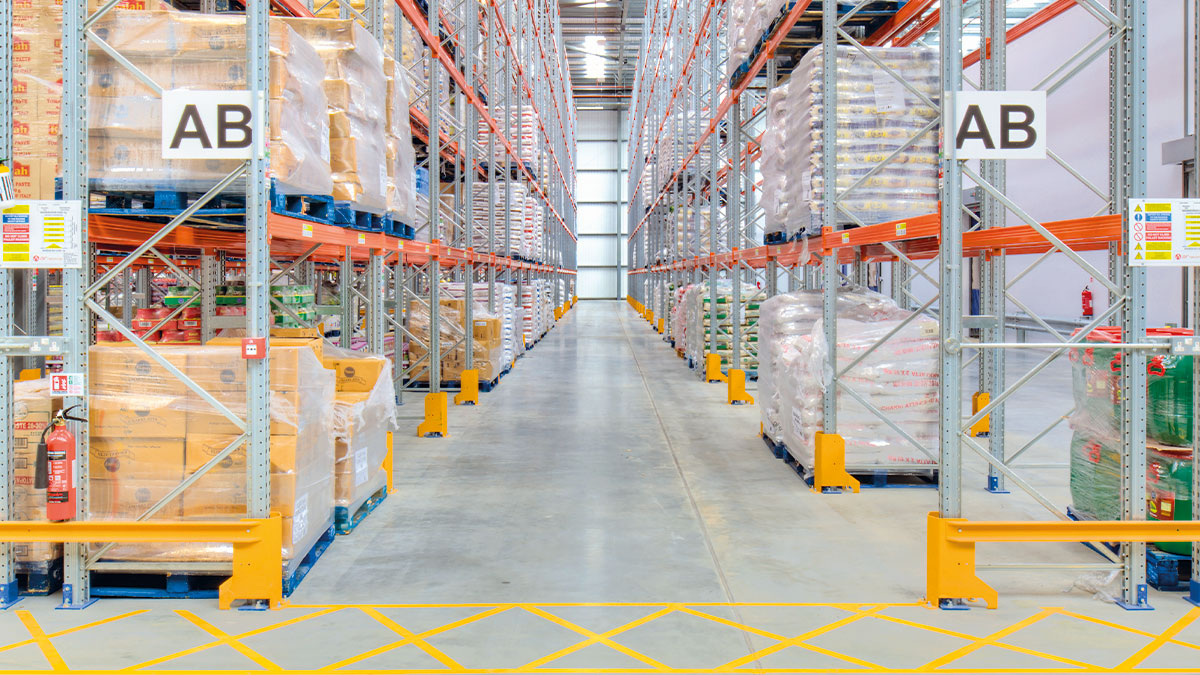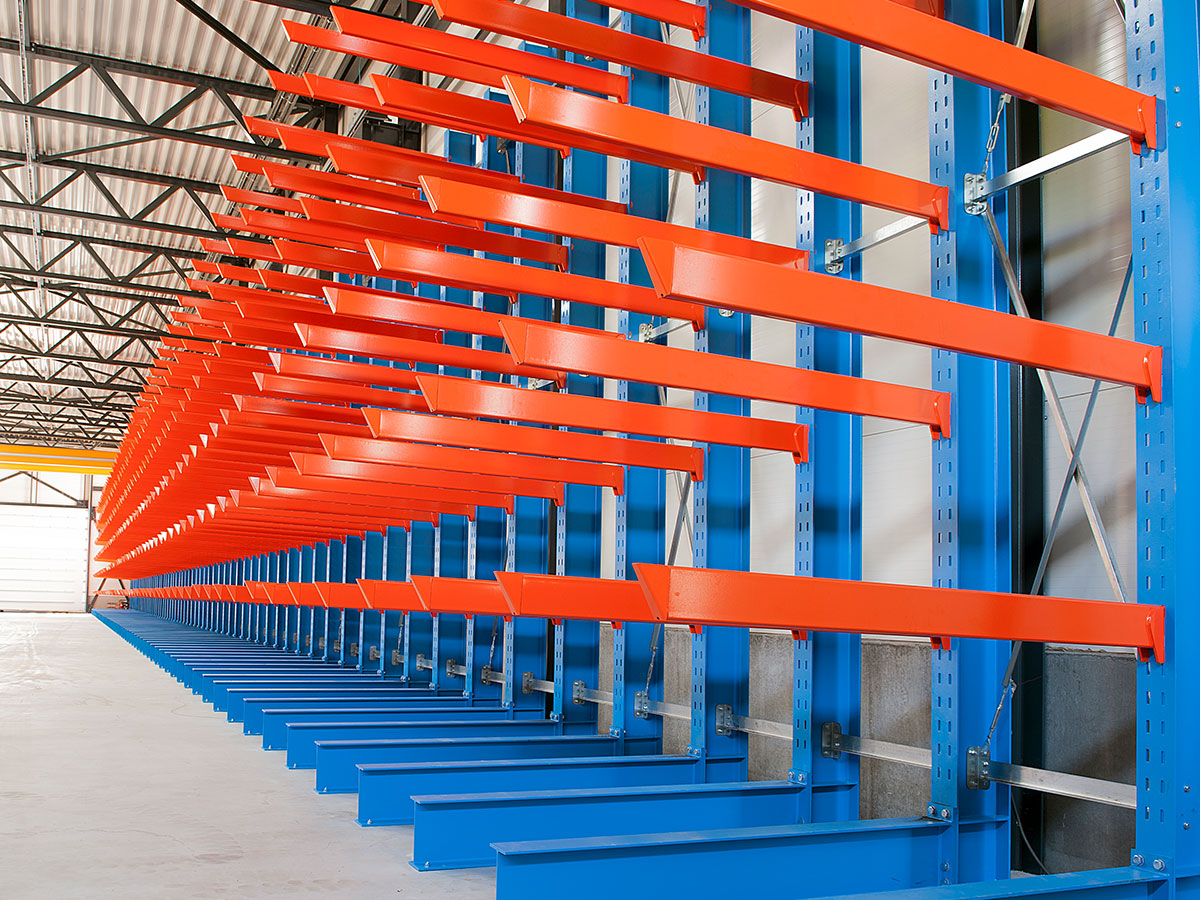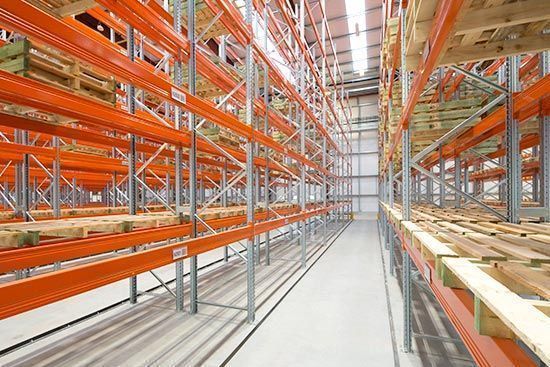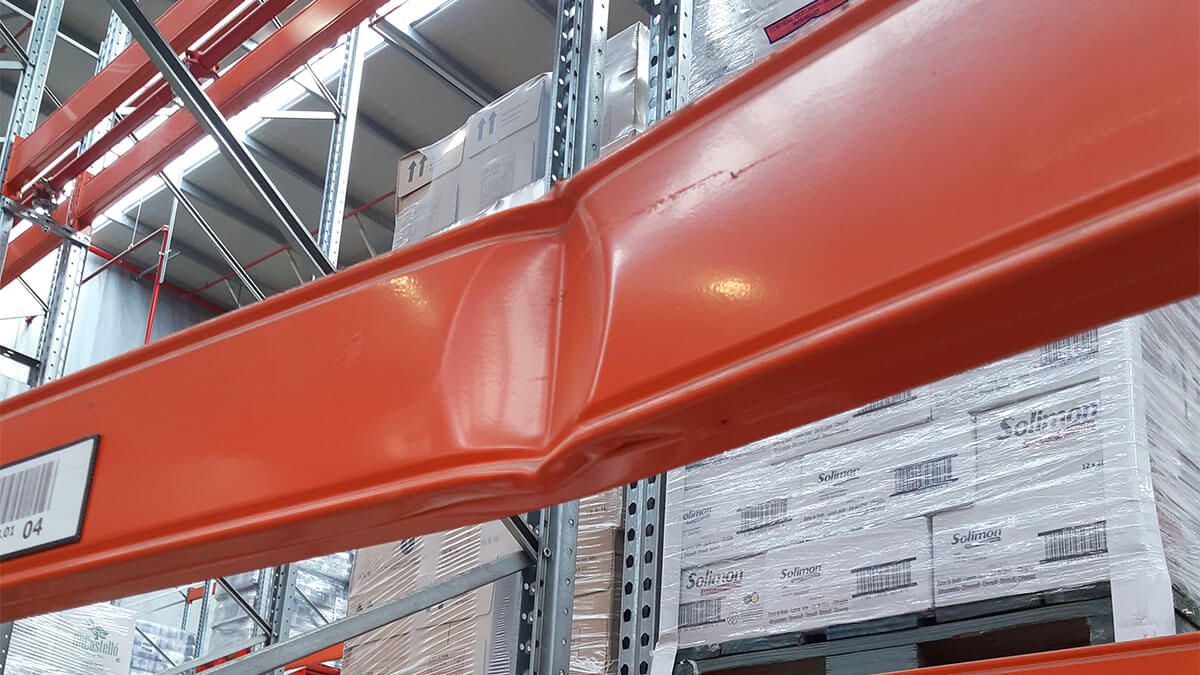Whether on the street, on the road, in our homes or in the media, signage is present in many aspects of our daily lives, without us realising it. It is also present in warehouses, where it is of great importance.
There are a series of specific legal obligations related to signage in warehouses, to guarantee the safety of people who work and move about in this environment. In addition to being mandatory, good signage can also be beneficial to a business for multiple reasons.
Before describing its advantages, let’s start by explaining in more detail what warehouse signage consists of.
What are the different elements of warehouse signage?
Firstly, it is mandatory for companies to have a warehouse with certain signage elements. These are laid down by Directive 92/58/CEE of the European Council, which establishes the “minimum requirements for the provision of safety and/or health signs at work”. These include rules on the use of signs, load notices, hand signals, ground markings, etc.
These legal obligations, designed to protect the safety of workers and other people who move about the warehouse, apply in particular to racking. Read our article on load notices for racking.
The different traffic signs
Prohibitory signs
![]()
Mandatory characteristics of European Council Directive 92/58/EEC:
Prohibitory signs must be "round shape", with a "black pictogram on a white background, red edging and diagonal line (running from left to right, along the pictogram at 45º to the horizontal) (the red part must take up at least 35% of the area of the sign)".
Warning signs
![]()
Mandatory characteristics of European Council Directive 92/58/EEC:
Warning signs must be "triangular shape", with a "black pictogram on a yellow background, black edging (the yellow part must take up at least 50% of the area of the sign)".
Mandatory signs
![]()
Mandatory characteristics of European Council Directive 92/58/EEC:
Mandatory signs must be "round shape", with a "white pictogram on a blue background (the blue part must take up at least 50% of the area of the sign)".
Emergency escape or first-aid signs
![]()
Mandatory characteristics of European Council Directive 92/58/EEC:
Emergency escape or first-aid signs must be "rectangular or square shape", with a "white pictogram on a green background (green must take up at least 50% of the area of the sign)".
Fire-fighting material or equipment signs
![]()
Mandatory characteristics of European Council Directive 92/58/EEC:
Fire-fighting material or equipment signs must be "rectangular or square shape", with a "white pictogram on a red background (the red part must take up at least 50% of the area of the sign)".

Other visual signage elements
Illuminated signs
Illuminated signs are defined in European Council Directive 92/58/EEC as “a sign produced by a device made of transparent or translucent materials which are illuminated from the inside or the rear in such a way as to give the appearance of a luminous surface”.
They must be designed in such a way that they are clearly understandable for people moving around the warehouse. To do this, they must not interfere with other illuminated signs, offer sufficient contrast with their surroundings, etc.
Traffic signs
The traffic routes of warehouses must also be marked with “continuous stripes in a clearly visible colour, preferably white or yellow, taking into account the colour of the ground”, in accordance with European Council Directive 92/58/EEC.
In particular, this makes the movement of handling equipment safer and easier. Consequently, the safety distances between pedestrians and these vehicles must be considered. Traffic routes located outside the warehouse must also be marked if they are not delimited by paving or barriers.

Gesture and acoustic signals
Gesture signals
Any potentially dangerous manoeuvre must be signalled using precise and coded gestures to warn people who are nearby. These gestures are defined in European Council Directive 92/58/EEC and may be accompanied by verbal communication.
Acoustic signals
Acoustic signals are an effective means of signalling danger or communicating information instantly. These acoustic signals must not overlap so that everyone can understand them, and they should be loud enough to be easily audible, without being painful. There are many ways of using signs and signals in a warehouse. Some of these should not overlap to make them easier for people moving through the warehouse to see and understand.
Signage in warehouses is a legal requirement, but it can also have a number of advantages for companies that install it correctly...
What are the advantages of good warehouse signage?
Above all, signage is an effective means of protecting against industrial accidents in the warehouse. Whether it’s a dropped pallet, contact with a harmful substance or interference with transit along poorly marked aisles, there are many risks in warehouses which must be properly managed. In fact, reducing the number of work aisles for handling equipment is an effective way of increasing safety in your warehouse, a function that our AR Drive In storage solution fulfils very well thanks to optimising the space that it allows. Signage is an essential factor for logistics operators, while reducing the risk of accidents and the stress that they can cause.
Warehouse signage can also optimise the efficiency of logistics operators. Effective floor signage can facilitate the smooth transit of handling equipment, in the same way as traffic lights help to organise vehicle movement. This can save time, because operators will have direct access to the information that they need: their traffic routes will be guided, areas in which PPE (personal protective equipment) is required will be indicated, they will know the maximum loads of the racking, where the emergency exits are located, in which direction traffic moves, etc. Likewise, good signage helps to reduce the number of damaged goods, by reducing handling errors and the additional costs that this entails.
Finally, a warehouse with correct signage helps operators to locate goods, thanks to clearly visible aisle numbering, for example. However, poor signage of the location of goods can lead to inaccurate inventory, which would hinder the smooth operation of the warehouse. Perpetual inventory is also an effective way of promoting good inventory. Please read our article on this subject for more information.
Warehouse signage is of vital importance for companies. Apart from being a legal obligation, it improves the safety of people who move about the warehouse and can provide a series of benefits for the company if it is installed correctly.













